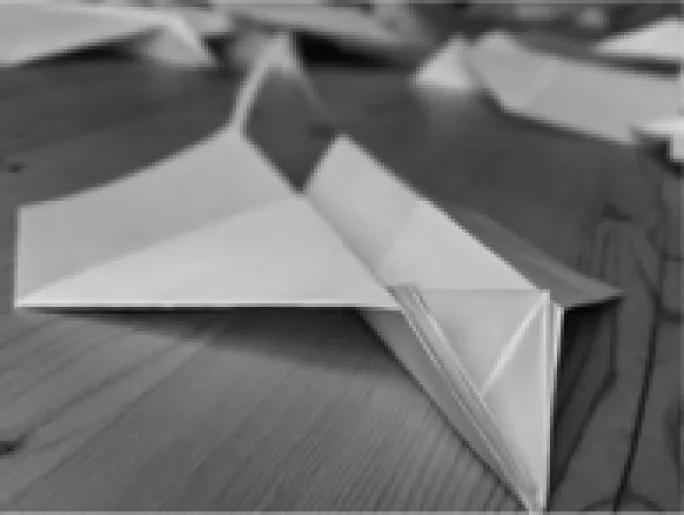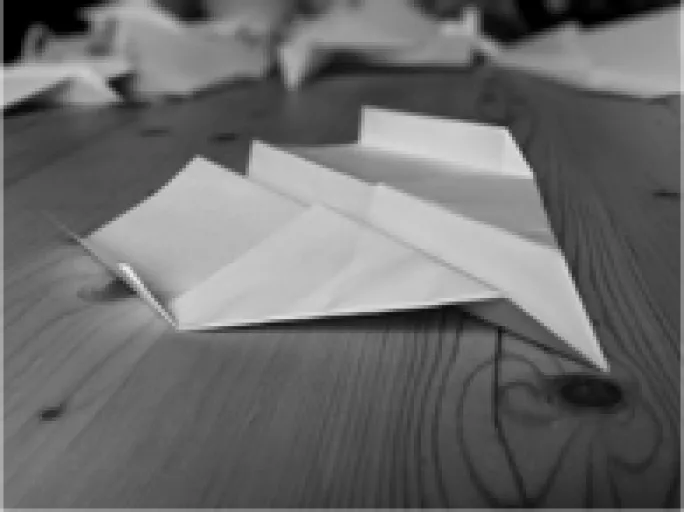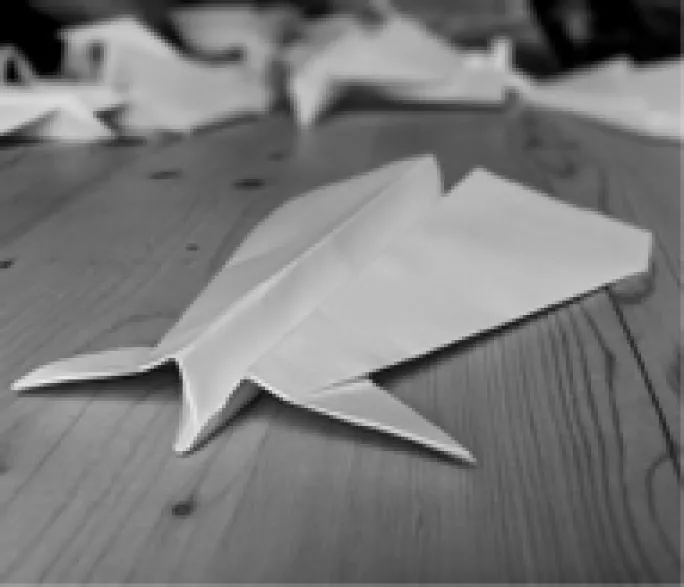So, you have a paper aeroplane problem. Well, lucky for you, I have taken it upon myself to determine the best paper plane for causing chaos in lessons so you can battle the student efforts with something truly magnificent. Or at least spot the most professional offenders.
How did I do this? I conducted a detailed experiment. I collected 25 pieces of A4, a stopwatch, a tape measure, and some willing volunteers.
And we took the five most common paper aeroplane designs and rigorously tested them. We timed how long it took to make each plane then measured the distance they flew. If a plane hit a wall, then we counted it as a misthrow.
Here’s our results:
The Dart
Time taken to fold: 56 seconds
Average distance travelled: 4.73m
Number of misthrows: 5
Mayhem co-efficient: 1.41
Tails:
Time taken to fold: 155 seconds
Average distance travelled: 5.11m
Number of misthrows: 0
Mayhem co-efficient: 3.30
Wing Tips:
Time taken to fold: 95 seconds
Average distance travelled: 7.32m
Number of misthrows: 7
Mayhem co-efficient: 0.96
Whiskers:
Time taken to fold: 82 seconds
Average distance travelled: 6.20m
Number of misthrows: 4
Mayhem co-efficient: 1.51
The YouTuber:
Time taken to fold: 96 seconds
Average distance travelled: 5.6m
Number of misthrows: 0
Mayhem co-efficient: 5.83
The mayhem coefficient is calculated by the following formula:
M = s/t x 100/1+n
Where M is the mayhem coefficient in metres per second, s is the distance in metres, t is the time in seconds, and n is the number of misthrows.
Conclusion:
The YouTuber is clearly the best plane for causing mayhem in lessons. It can be folded during the length of time a teacher is facing the board, and can be flown with a high level of accuracy and reliability across the classroom to a co-conspirator. Its nearest rival, Tails, takes nearly twice as long to fold, for no increase in distance.
Wing Tips flew the furthest distance, but its lack of accuracy meant that the mayhem coefficient decreased significantly. Should a plane fly off-course, it could land the thrower in detention.
The Dart is the most popular choice for paper-based aerodynamic mayhem, probably due to the simplicity of its design, but its poor accuracy and minimal gliding distances, suggests that this should be removed from the student chaos arsenal. Equally, Whiskers’ flashy looks cannot make up for its lacklustre performance in trials.
Evaluation:
The length of the room (8.00 m) was a limiting factor, and if the planes that hit the end wall had been able to continue gliding, this may have significantly improved the mayhem coefficient of Wing Tips in particular. The experiment was originally intended to be held in the village church using the full length of the knave, but it was unfortunately locked at the time of investigation.
There are a number of other paper planes on the market, and a fuller investigation could look into a much wider variety of designs. Equally, exciting research could be carried out into the relationship between wing area and flight distance, or centre of gravity and ‘swooping’.
Take home for teachers:
If you see a YouTuber plane, duck. If you don’t see one, scoff at your students’ substandard paper aeroplane efforts.
Emily Seeber is head of science at Bedales School in Hampshire. She writes the Seeber’s Science column fortnightly. If you would like her to look into any classroom problems that can be answered through science, leave a comment under the article.









